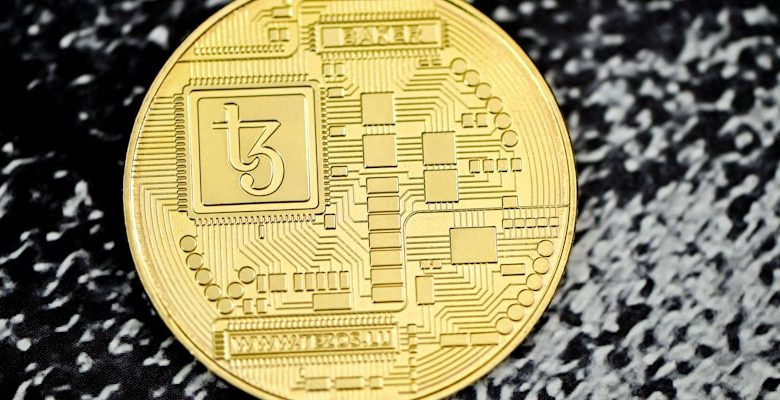Blockchain and the Fight Against Counterfeiting

- Understanding Blockchain Technology
- The Rise of Counterfeiting in Today’s Market
- How Blockchain Can Help Combat Counterfeiting
- Real-world Applications of Blockchain in Anti-counterfeiting
- Challenges and Limitations of Using Blockchain for Counterfeit Prevention
- Collaborative Efforts in the Fight Against Counterfeiting
Understanding Blockchain Technology
Blockchain technology is a decentralized, distributed ledger system that securely records transactions across a network of computers. This technology is revolutionizing various industries by providing transparency, security, and immutability to data. In the fight against counterfeiting, blockchain plays a crucial role in ensuring the authenticity of products and preventing fraudulent activities.
One of the key benefits of blockchain technology in combating counterfeiting is its ability to create a transparent and tamper-proof record of transactions. Each transaction is verified by multiple parties on the network, making it nearly impossible to alter or manipulate the data. This transparency ensures that all stakeholders can track the movement of products from the manufacturer to the end consumer, making it easier to identify and eliminate counterfeit goods.
Additionally, blockchain technology enables the creation of unique digital identities for products through the use of smart contracts. These digital identities contain information such as the product’s origin, manufacturing date, and distribution history. By scanning a product’s QR code or RFID tag, consumers can access this information and verify the authenticity of the product. This not only helps in preventing counterfeiting but also builds trust between consumers and manufacturers.
Furthermore, blockchain technology provides a decentralized platform for stakeholders to collaborate and share information in real-time. By leveraging blockchain networks, manufacturers, distributors, retailers, and consumers can work together to track and verify products, identify potential counterfeit items, and take immediate action to address the issue. This real-time collaboration enhances the efficiency and effectiveness of anti-counterfeiting efforts.
In conclusion, blockchain technology is a powerful tool in the fight against counterfeiting. By creating transparent records of transactions, enabling the creation of digital identities for products, and facilitating real-time collaboration among stakeholders, blockchain technology can help ensure the authenticity of products and protect consumers from counterfeit goods. Embracing blockchain technology in anti-counterfeiting strategies is essential to safeguarding the integrity of products and maintaining consumer trust.
The Rise of Counterfeiting in Today’s Market
Counterfeiting has become a widespread issue in today’s market, posing a significant threat to businesses and consumers alike. The rise of advanced technology has made it easier for counterfeiters to produce fake products that closely resemble the real ones. This not only results in financial losses for companies but also puts consumers at risk of purchasing substandard or potentially harmful goods. As a result, there is a growing need for innovative solutions to combat counterfeiting and protect the integrity of the supply chain. Blockchain technology has emerged as a promising tool in this fight, offering a secure and transparent way to track and verify products throughout their journey from manufacturer to consumer. By leveraging blockchain, businesses can establish a tamper-proof record of their products’ authenticity, making it easier to identify and eliminate counterfeit goods from the market. This not only helps safeguard brand reputation and consumer trust but also contributes to overall market integrity. The implementation of blockchain technology represents a significant step forward in the ongoing battle against counterfeiting, providing a powerful weapon to protect businesses and consumers from the harmful effects of fake products.
How Blockchain Can Help Combat Counterfeiting
Blockchain technology has emerged as a powerful tool in the fight against counterfeiting, offering a transparent and secure way to track and verify the authenticity of products. By creating a decentralized ledger that records every transaction in a tamper-proof manner, blockchain provides a reliable way to ensure the integrity of the supply chain.
One of the key ways in which blockchain can help combat counterfeiting is by enabling the creation of unique digital identities for each product. These digital fingerprints can be used to track the movement of goods from the manufacturer to the end consumer, making it easy to verify the authenticity of a product at every step of the supply chain.
Blockchain technology also allows for the creation of smart contracts, which are self-executing contracts with the terms of the agreement between buyer and seller directly written into lines of code. These smart contracts can help automate the verification process, ensuring that only genuine products are exchanged and reducing the risk of counterfeit goods entering the market.
Real-world Applications of Blockchain in Anti-counterfeiting
One of the real-world applications of blockchain technology is in the fight against counterfeit products. By leveraging the inherent security and transparency of blockchain, companies can create a tamper-proof record of the entire supply chain process. This allows consumers to verify the authenticity of a product and ensures that counterfeit goods are easily identified and traced back to their source.
Blockchain technology can also be used to create unique digital identities for each product, making it nearly impossible for counterfeiters to replicate or alter. This can be particularly useful in industries like pharmaceuticals, where counterfeit drugs pose a serious risk to public health. By implementing blockchain solutions, companies can protect their brand integrity and ensure the safety of their customers.
Furthermore, blockchain can enable the creation of decentralized marketplaces where consumers can buy products directly from manufacturers, eliminating the risk of purchasing counterfeit goods from third-party sellers. This not only helps in combating counterfeiting but also promotes trust and transparency in the marketplace.
In conclusion, blockchain technology has immense potential in the fight against counterfeiting. By leveraging its security features and transparency, companies can protect their brand reputation, ensure product authenticity, and provide consumers with a safe and trustworthy shopping experience. As the technology continues to evolve, we can expect even more innovative solutions to emerge in the battle against counterfeit products.
Challenges and Limitations of Using Blockchain for Counterfeit Prevention
When considering the use of blockchain for counterfeit prevention, it is important to acknowledge the challenges and limitations that come with this technology. While blockchain offers many benefits in terms of transparency and security, there are still some obstacles that need to be addressed.
One of the main challenges of using blockchain for counterfeit prevention is the issue of scalability. As more transactions are added to the blockchain, the size of the ledger grows, which can lead to slower transaction times and increased costs. This can be a significant barrier for companies looking to implement blockchain for large-scale counterfeit prevention efforts.
Another limitation of blockchain for counterfeit prevention is the issue of data privacy. While blockchain is known for its secure and immutable nature, there are still concerns about how sensitive information is stored and accessed on the blockchain. Companies must carefully consider how they will protect customer data while still leveraging the benefits of blockchain technology.
Additionally, interoperability can be a challenge when it comes to using blockchain for counterfeit prevention. Different blockchain platforms may not always be compatible with each other, making it difficult for companies to share information and collaborate effectively in the fight against counterfeiting. This lack of standardization can hinder the widespread adoption of blockchain for counterfeit prevention efforts.
In conclusion, while blockchain shows great promise in the fight against counterfeiting, there are challenges and limitations that need to be addressed. Companies must carefully consider these factors and work towards finding solutions that will allow them to leverage the benefits of blockchain technology while overcoming these obstacles.
Collaborative Efforts in the Fight Against Counterfeiting
Collaborative efforts play a crucial role in the fight against counterfeiting, and blockchain technology has proven to be a valuable tool in this battle. By leveraging the transparency and immutability of the blockchain, stakeholders from various industries can work together to combat the proliferation of counterfeit goods.
One of the key benefits of blockchain technology is its ability to create a secure and decentralized database that can be accessed and verified by all parties involved. This level of transparency helps to build trust among stakeholders and enables them to quickly identify and eliminate counterfeit products from the market.
Furthermore, blockchain technology allows for the creation of unique digital signatures for each product, making it easier to track its journey through the supply chain. This feature not only helps to prevent counterfeiting but also provides valuable insights into consumer behavior and preferences.
By pooling their resources and expertise, companies, governments, and organizations can develop innovative solutions to combat counterfeiting effectively. Through collaborative efforts and the adoption of blockchain technology, we can create a safer and more secure marketplace for consumers around the world.



